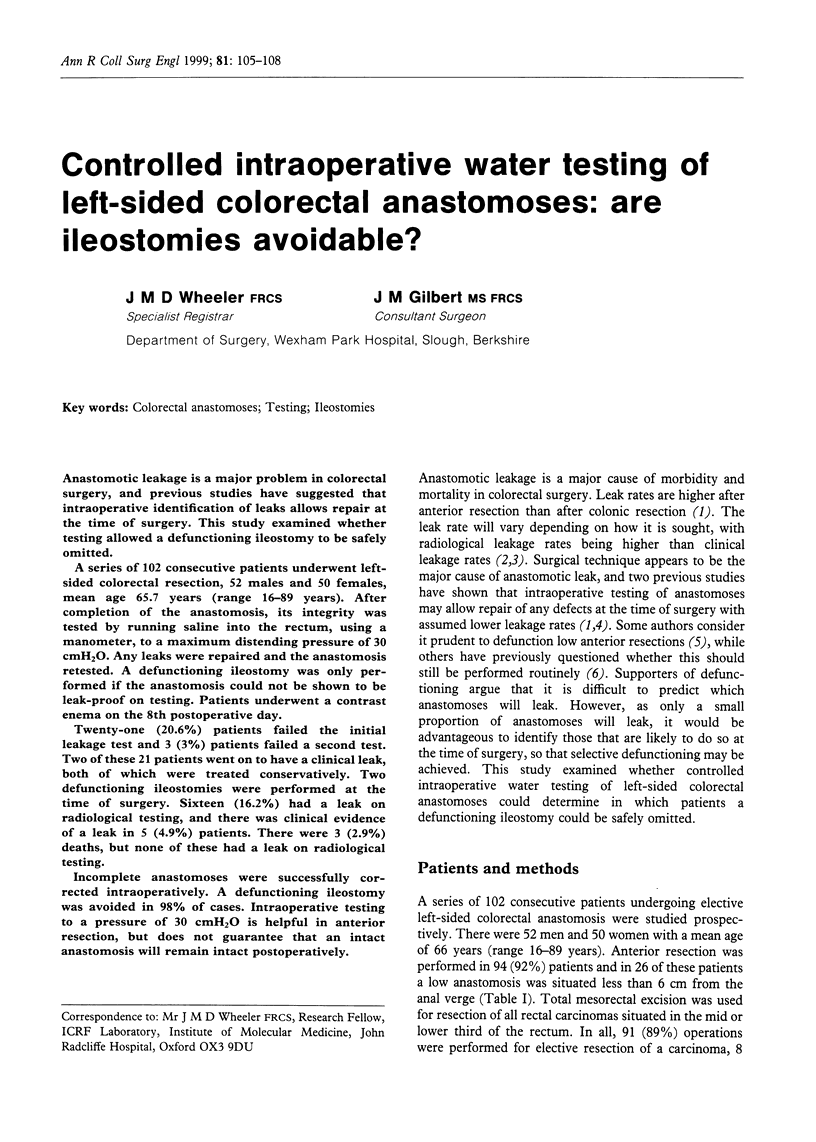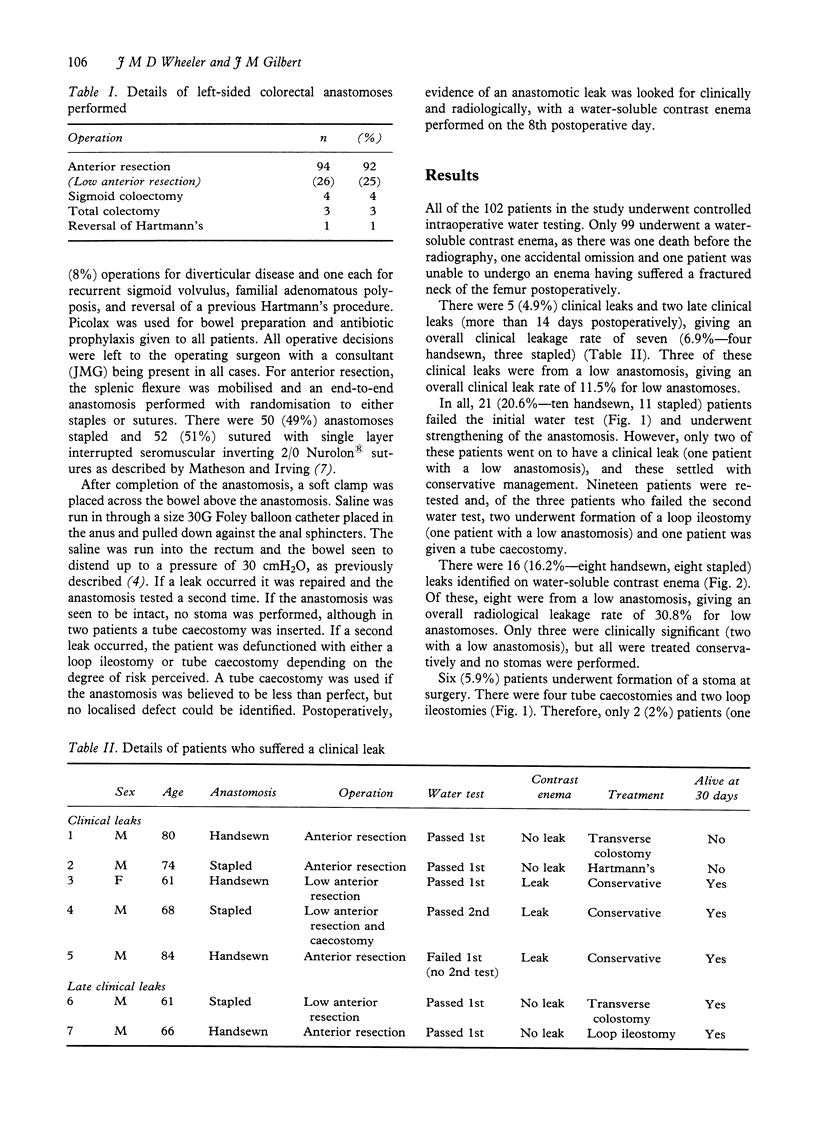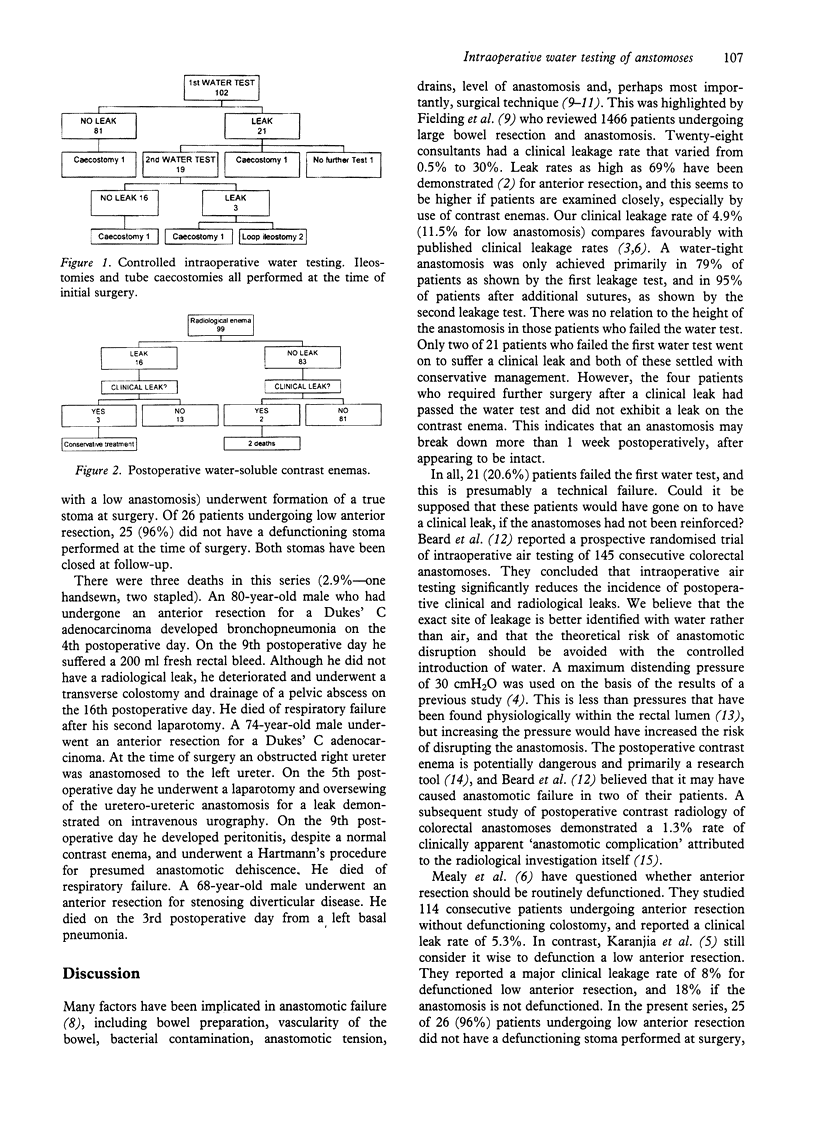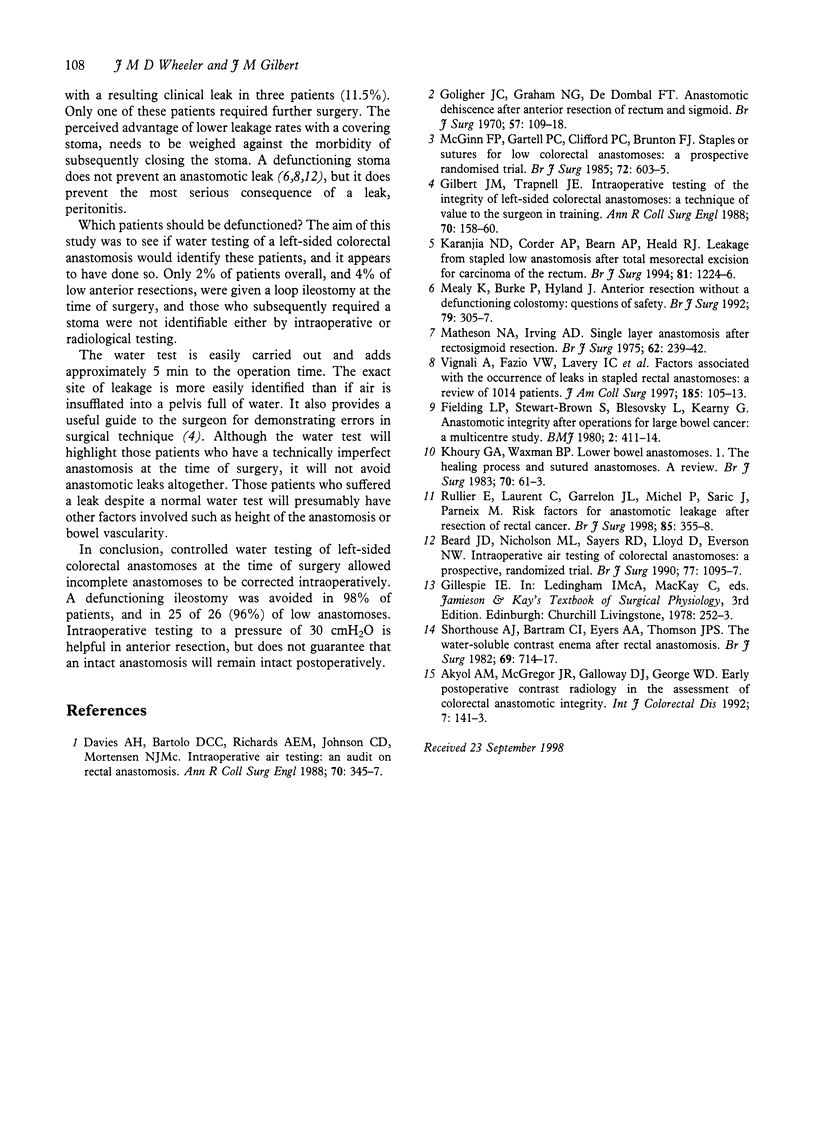Abstract
Anastomotic leakage is a major problem in colorectal surgery, and previous studies have suggested that intraoperative identification of leaks allows repair at the time of surgery. This study examined whether testing allowed a defunctioning ileostomy to be safely omitted. A series of 102 consecutive patients underwent left-sided colorectal resection, 52 males and 50 females, mean age 65.7 years (range 16-89 years). After completion of the anastomosis, its integrity was tested by running saline into the rectum, using a manometer, to a maximum distending pressure of 30 cmH2O. Any leaks were repaired and the anastomosis retested. A defunctioning ileostomy was only performed if the anastomosis could not be shown to be leak-proof on testing. Patients underwent a contrast enema on the 8th postoperative day. Twenty-one (20.6%) patients failed the initial leakage test and 3 (3%) patients failed a second test. Two of these 21 patients went on to have a clinical leak, both of which were treated conservatively. Two defunctioning ileostomies were performed at the time of surgery. Sixteen (16.2%) had a leak on radiological testing, and there was clinical evidence of a leak in 5 (4.9%) patients. There were 3 (2.9%) deaths, but none of these had a leak on radiological testing. Incomplete anastomoses were successfully corrected intraoperatively. A defunctioning ileostomy was avoided in 98% of cases. Intraoperative testing to a pressure of 30 cmH2O is helpful in anterior resection, but does not guarantee that an intact anastomosis will remain intact postoperatively.
Full text
PDF



Selected References
These references are in PubMed. This may not be the complete list of references from this article.
- Akyol A. M., McGregor J. R., Galloway D. J., George W. D. Early postoperative contrast radiology in the assessment of colorectal anastomotic integrity. Int J Colorectal Dis. 1992 Sep;7(3):141–143. doi: 10.1007/BF00360354. [DOI] [PubMed] [Google Scholar]
- Beard J. D., Nicholson M. L., Sayers R. D., Lloyd D., Everson N. W. Intraoperative air testing of colorectal anastomoses: a prospective, randomized trial. Br J Surg. 1990 Oct;77(10):1095–1097. doi: 10.1002/bjs.1800771006. [DOI] [PubMed] [Google Scholar]
- Davies A. H., Bartolo D. C., Richards A. E., Johnson C. D., McC Mortensen N. J. Intra-operative air testing: an audit on rectal anastomosis. Ann R Coll Surg Engl. 1988 Nov;70(6):345–347. [PMC free article] [PubMed] [Google Scholar]
- Fielding L. P., Stewart-Brown S., Blesovsky L., Kearney G. Anastomotic integrity after operations for large-bowel cancer: a multicentre study. Br Med J. 1980 Aug 9;281(6237):411–414. doi: 10.1136/bmj.281.6237.411. [DOI] [PMC free article] [PubMed] [Google Scholar]
- Gilbert J. M., Trapnell J. E. Intraoperative testing of the integrity of left-sided colorectal anastomoses: a technique of value to the surgeon in training. Ann R Coll Surg Engl. 1988 May;70(3):158–160. [PMC free article] [PubMed] [Google Scholar]
- Goligher J. C., Graham N. G., De Dombal F. T. Anastomotic dehiscence after anterior resection of rectum and sigmoid. Br J Surg. 1970 Feb;57(2):109–118. doi: 10.1002/bjs.1800570208. [DOI] [PubMed] [Google Scholar]
- Karanjia N. D., Corder A. P., Bearn P., Heald R. J. Leakage from stapled low anastomosis after total mesorectal excision for carcinoma of the rectum. Br J Surg. 1994 Aug;81(8):1224–1226. doi: 10.1002/bjs.1800810850. [DOI] [PubMed] [Google Scholar]
- Khoury G. A., Waxman B. P. Large bowel anastomoses. I. The healing process and sutured anastomoses. A review. Br J Surg. 1983 Feb;70(2):61–63. doi: 10.1002/bjs.1800700202. [DOI] [PubMed] [Google Scholar]
- Matheson N. A., Irving A. D. Single layer anastomosis after rectosigmoid resection. Br J Surg. 1975 Mar;62(3):239–242. doi: 10.1002/bjs.1800620318. [DOI] [PubMed] [Google Scholar]
- McGinn F. P., Gartell P. C., Clifford P. C., Brunton F. J. Staples or sutures for low colorectal anastomoses: a prospective randomized trial. Br J Surg. 1985 Aug;72(8):603–605. doi: 10.1002/bjs.1800720807. [DOI] [PubMed] [Google Scholar]
- Mealy K., Burke P., Hyland J. Anterior resection without a defunctioning colostomy: questions of safety. Br J Surg. 1992 Apr;79(4):305–307. doi: 10.1002/bjs.1800790406. [DOI] [PubMed] [Google Scholar]
- Rullier E., Laurent C., Garrelon J. L., Michel P., Saric J., Parneix M. Risk factors for anastomotic leakage after resection of rectal cancer. Br J Surg. 1998 Mar;85(3):355–358. doi: 10.1046/j.1365-2168.1998.00615.x. [DOI] [PubMed] [Google Scholar]
- Shorthouse A. J., Bartram C. I., Eyers A. A., Thomson J. P. The water soluble contrast enema after rectal anastomosis. Br J Surg. 1982 Dec;69(12):714–717. doi: 10.1002/bjs.1800691210. [DOI] [PubMed] [Google Scholar]
- Vignali A., Fazio V. W., Lavery I. C., Milsom J. W., Church J. M., Hull T. L., Strong S. A., Oakley J. R. Factors associated with the occurrence of leaks in stapled rectal anastomoses: a review of 1,014 patients. J Am Coll Surg. 1997 Aug;185(2):105–113. doi: 10.1016/s1072-7515(97)00018-5. [DOI] [PubMed] [Google Scholar]


